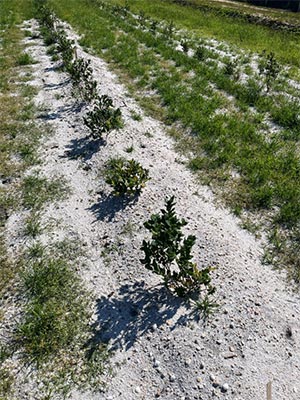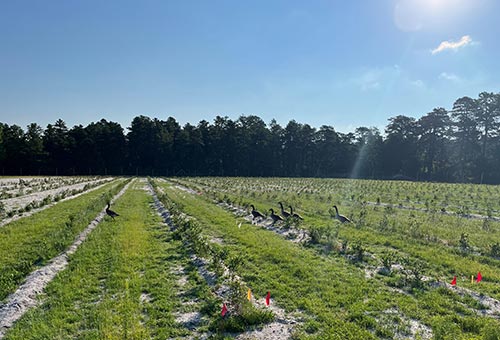
Figure 1. Blueberry field with cover crop in interrows.
Blueberry is a very important crop in New Jersey, and recent declines in yield and health of blueberry have great impact on farmers’ profits and economic viability. Condition of the soil, or “soil health”, has been implicated in causing or contributing to this problem. Efforts to improve soil health in agricultural fields often include use of cover crops, and in a perennial row crop like blueberry, the cover crop can be established between the blueberry rows. However, the very acidic soil pH required for blueberry production is not suitable for most commonly used cover crops. Sheep fescue has been used; it has greater acid-tolerance than most grasses. Rutgers researchers are investigating an alternative, a grass usually considered a weed: goose grass.
A baseline of soil health was established by random sampling of 8 soil cores across the field where the trial is taking place at the P.E. Marucci Center. Goosegrass cover crop seeds were harvested in October 2020 and seeded in inter-rows of blueberries in January 2021. For comparison, sheep fescue was also seeded because it is a cover crop often recommended for acidic soil. Emergence of the cover crop started in April 2021, and first cover crop density counts were made in late June 2022. Both goosegrass and sheep fescue have shown acceptable emergence but might need to be reseeded in fall for better uniformity of soil cover. Pre-emergence herbicides used along the blueberry rows have shown great efficacy at controlling unwanted goosegrass or sheep fescue in the row.
A major issue that needs to be addressed this year is damage from a large flock of Canada geese that are constantly found grazing the experimental cover crop field. Young cover crop seedlings are either rooted out or prevented from growing. Weedy sedges, not eaten by the geese, become the dominant plant species where the cover crops are trying to be implemented. Geese control measures will have to be considered to allow successful evaluation.

Figure 2. Canada geese have impaired research on establishing a cover crop for blueberry fields.

